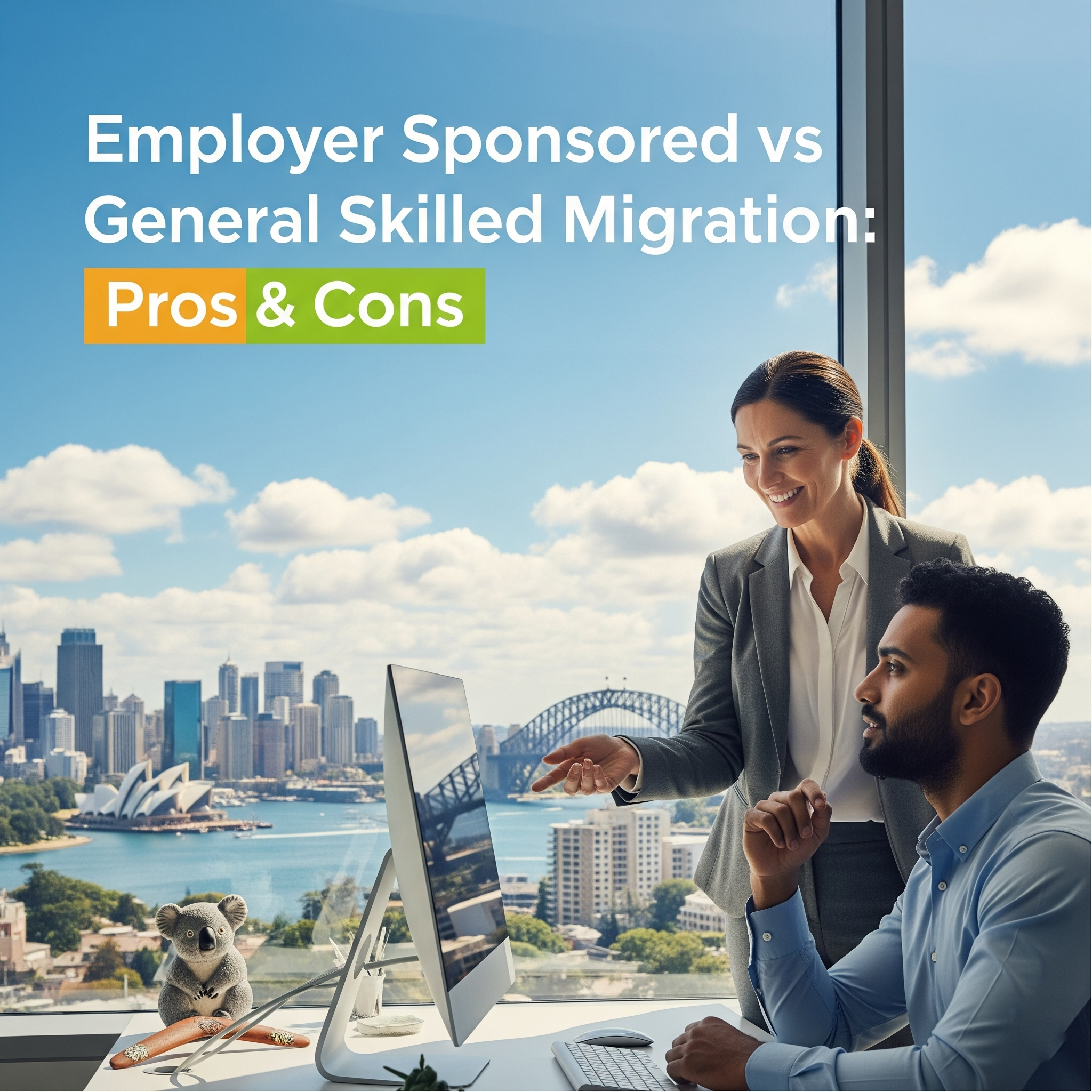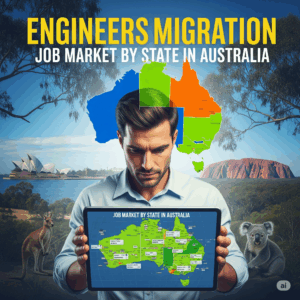Compare employer sponsored visas and general skilled migration in Australia. Discover key differences, pros, cons, and which pathway suits your goals.
Employer-Sponsored vs General Skilled Migration: Pros & Cons
Many skilled professionals dream of building a career in Australia, but choosing the right migration pathway can be confusing. Two of the most popular options are the employer sponsored visa and general skilled migration. Misconceptions about these visas can lead to missed opportunities or unnecessary delays. This article breaks down the myths and clarifies the real pros and cons of each pathway, helping you make an informed decision.
Myth 1: “Employer Sponsored and General Skilled Migration Visas Are Basically the Same”
The Truth:
While both are work visas, they differ fundamentally in eligibility, process, and flexibility.
- Employer Sponsored Visa:
Requires a job offer and sponsorship from an Australian employer. The employer must demonstrate a genuine need for your skills and, in most cases, show they could not find a suitable local candidate. Popular types include the Temporary Skill Shortage (TSS) visa (subclass 482), Skilled Employer Sponsored Regional (subclass 494), and Employer Nomination Scheme (ENS) visa (subclass 186). - General Skilled Migration:
Does not require a job offer. Instead, applicants are assessed on a points-based system considering age, qualifications, work experience, and English proficiency. Key visas include the Skilled Independent visa (subclass 189), Skilled Nominated visa (subclass 190), and Skilled Work Regional (Provisional) visa (subclass 491).
Key Difference:
Employer sponsored visas tie you to a specific employer and role, while general skilled migration offers more independence and flexibility once you arrive.
Myth 2: “Employer Sponsored Visas Guarantee Permanent Residency Faster”
The Truth:
Employer sponsorship can be a pathway to permanent residency, but it is not always faster or guaranteed.
- Employer Nomination Scheme (ENS) visa (subclass 186):
Provides a direct route to permanent residency, but only after meeting strict requirements, including time spent with the sponsoring employer and occupation eligibility. - Temporary Skill Shortage (TSS) visa (subclass 482):
Usually temporary, but may lead to permanent residency through the ENS or other streams after several years. - General Skilled Migration:
Some visas, such as the Skilled Independent visa (subclass 189), offer immediate permanent residency if you meet the points threshold and other criteria.
Key Difference:
General skilled migration often provides a clearer, more direct path to permanent residency for highly skilled applicants, while employer sponsorship may require a longer commitment to a single employer and additional steps.
Myth 3: “General Skilled Migration Is Only for the Most Highly Qualified”
The Truth:
General skilled migration is competitive, but not just for top-tier professionals.
- Points-Based Assessment:
The system rewards a mix of age, skills, English ability, and work experience. Many qualified tradespeople, health professionals, and IT specialists succeed, not just those with advanced degrees. - Skilled Occupation Lists:
Both pathways require your occupation to be on an approved list, but the lists and requirements differ. Employer sponsored visas may have more flexibility for certain roles if an employer can demonstrate genuine need.
Key Difference:
General skilled migration is accessible to a wide range of skilled workers, not just those with the highest qualifications. Employer sponsorship can open doors for those whose occupations are in demand but who may not meet the points threshold.
Pros & Cons Table
| Feature | Employer Sponsored Visa | General Skilled Migration |
|---|---|---|
| Job Offer Required | Yes | No |
| Points Test | No | Yes |
| Independence | Tied to employer/role | Free to choose employer/location |
| Path to PR | Possible, often after set period | Direct for some visas |
| Processing Time | Maybe faster if employer needs are urgent | Can vary, sometimes longer |
| Regional Incentives | Yes, for regional employer-sponsored visas | Yes, for regional skilled migration visas |
| Flexibility | Limited (must stay with sponsor) | High (can change jobs/locations) |
| Risk of Job Loss | Visa may be cancelled if employment ends | Visa unaffected by job changes |
| Cost | Employer often pays some fees | Applicant is responsible for all fees |
The Key of Making Decisions
Both employer sponsored visas and general skilled migration offer valuable opportunities for skilled workers in Australia. Your choice should depend on your occupation, qualifications, career goals, and personal circumstances. If you have a job offer from an Australian employer, employer sponsorship may provide a quicker entry. If you want flexibility and independence, general skilled migration could be your best path. Understanding the true differences and requirements is key to making the right decision for your future.


